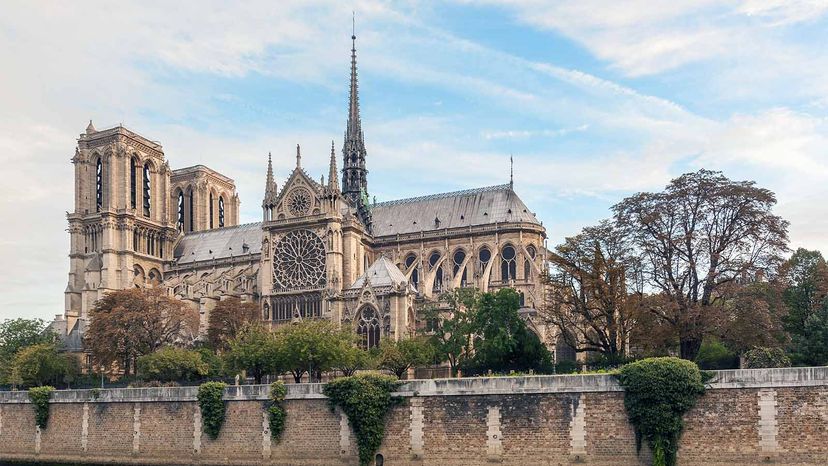
In April 2019, Parisians watched in horror as a massive fire swept through one of the world's most recognized examples of Gothic architecture, the Notre Dame Cathedral Paris. Before the blaze was extinguished, it destroyed the 12-century Gothic landmark's spire, clock and central frame, and no cause was definitively determined.
Reconstruction has already been underway for several years, and the National Commission for Heritage and Architecture (CNPA) has ensured the restoration process will keep with the Gothic style of architecture.
Advertisem*nt
Contents
- What Is Gothic Architecture?
- Influences on Gothic Architecture
- Flying Buttresses
- Pointed Arches
- Ribbed Vaults
- Large Stained-glass Windows
- Gargoyles and Ornate Decoration Stone
- Examples of Gothic Architecture
What Is Gothic Architecture?
Gothic architecture originated in the Middle Ages in France and expanded throughout Europe through the 12th and 16th centuries, where today you can see magnificent, detailed towering buildings that take center stage. It was initially called Opus Francigenum, which means "French Work," and was an architectural style dictated by the Roman Catholic Church.
During this period, people weren't thinking necessarily about style, however. Buildings needed to be constructed, and many happened to be houses of worship.
Advertisem*nt
"The Gothic style is attached to a particular building program — religious structures only," Eugene Colberg, principal of Colberg Architecture in New York City, explains via email. "Builders of these cathedrals did not set out to do Gothic architecture, they built in the way they knew how to do it, using the tools and capacities they had, and like everything else, the style was a progression."
Gothic style architecture evolved over time, although there are specific features and characteristics that make these architectural wonders stand out.
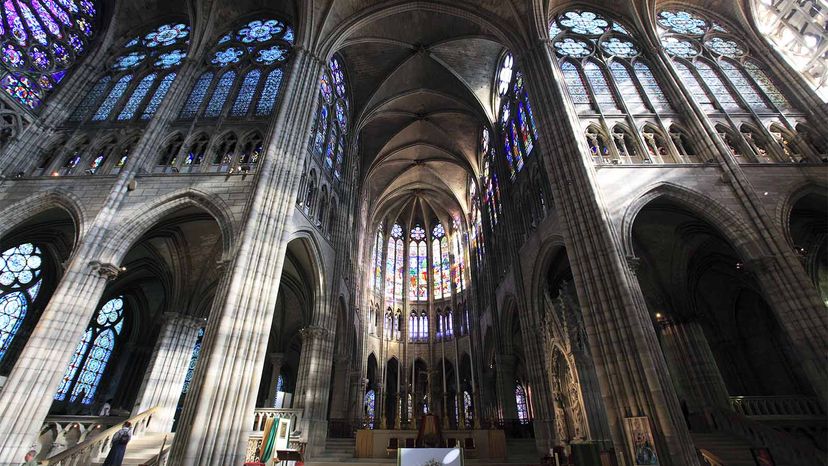
Advertisem*nt
Influences on Gothic Architecture
The Basilica of Saint-Denis, built in 1135, is considered the first Gothic building. It evolved out of Romanesque style, which included many arches, vaulted ceilings and small stained-glass windows. Gothic architecture exaggerated these, making arches much larger and stained-glass windows more ornate, even adding detailed storylines.
"In the early Middle Ages, you had pilgrims who went to these sites on pilgrimages, and these structures needed space to accommodate crowds who often did not know how to read and write," Colberg says.
Advertisem*nt
But Gothic style also abandoned the thick, solid walls of Romanesque style to make way for taller, more massive structures. To accommodate these thinner and lighter walls, Gothic-era builders used flying buttresses (more on these shortly) to support the added weight.
Gothic architecture also varied by, and was influenced by, the building location and when it was built. Many of the characteristics of Gothic architecture served multiple purposes, from adding more stability to allowing in more natural light.
"Features like high pointed or Gothic arches and flying buttresses were in buildings located mostly in Northern Europe where sunlight can be scarce, depending on location and time of year, and they are in big spaces that are hard to light with candlelight," Colberg says.
But there are five characteristics of Gothic architecture that stand out from other styles.
Advertisem*nt
1. Flying Buttresses
The flying buttresses dominate external Gothic architecture and create more stability by redistributing weight from heavier and higher levels or floors. They're both decorative and practical and often display a sense of flight, hence the name. Flying buttresses also are adorned with elaborate carvings to allude to an aura of grandness.
"Flying buttresses were an engineering tool and technical feat that allowed for greater stability," says Colberg. "They allowed the structure to have a thinner wall by providing lateral stability."
Advertisem*nt
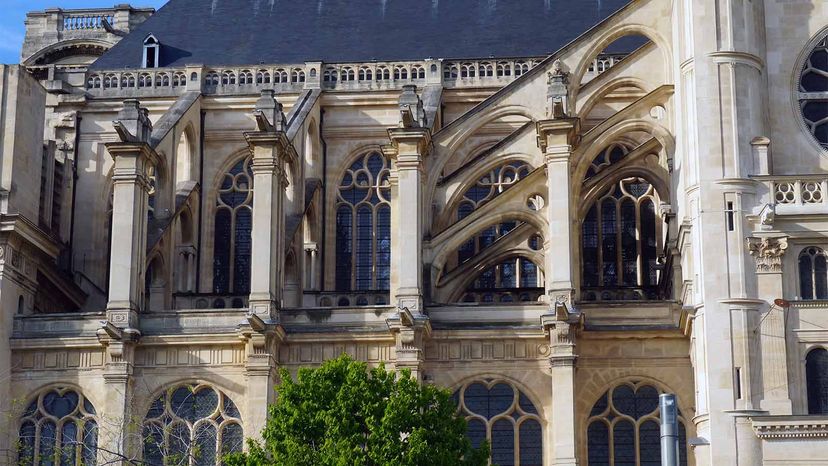
2. Pointed Arches
Rather than using round, Romanesque arches, Gothic architecture features pointed arches similar to those found in Islamic structures. The goal of using pointed arches was to create more space by building vertically.
"Because you're making everything taller, and stretching it up, you don't need as much lateral support because the flying buttresses are giving you that," Colberg says.
Advertisem*nt
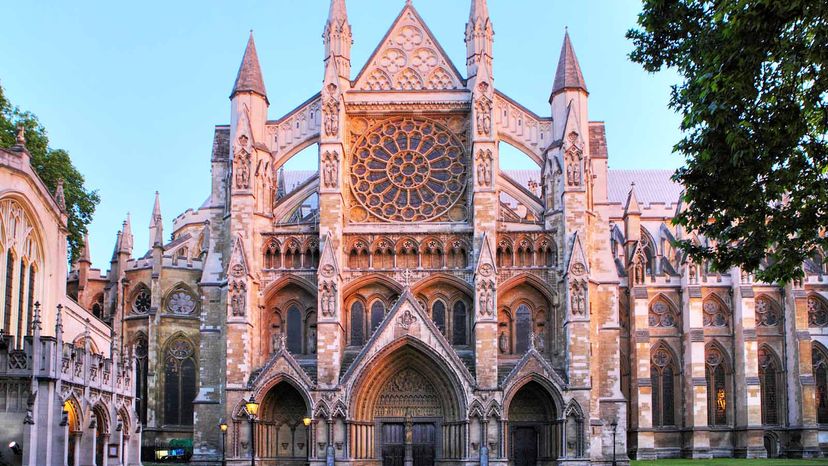
3. Ribbed Vaults
Gothic structures are dominated by high ceilings and large windows, and this was possible by implementing ribbed vaults. Ribbed vaults are not only visually stunning, but they also create structural support for rounded roofs by placing arches next to each other or in a parallel fashion.
"Similar to pointed arches, rib vaulting was an engineering method of providing support without as much meat," says Colberg. "As a result, everything seems lighter and not as heavy."
Advertisem*nt

4. Large Stained-glass Windows
While many houses of worship have stained-glass windows, they are featured prominently in Gothic architecture. Take the famous trio of Rose Windows at Notre Dame. The south Rose Window, or Rose du Midi, is about 42 feet (12.9 meters) in diameter, the largest in the church. Like the north Rose Window, it was crafted in the middle of the 13th century. These massive windows were added as much for decoration as they were to let in natural light.
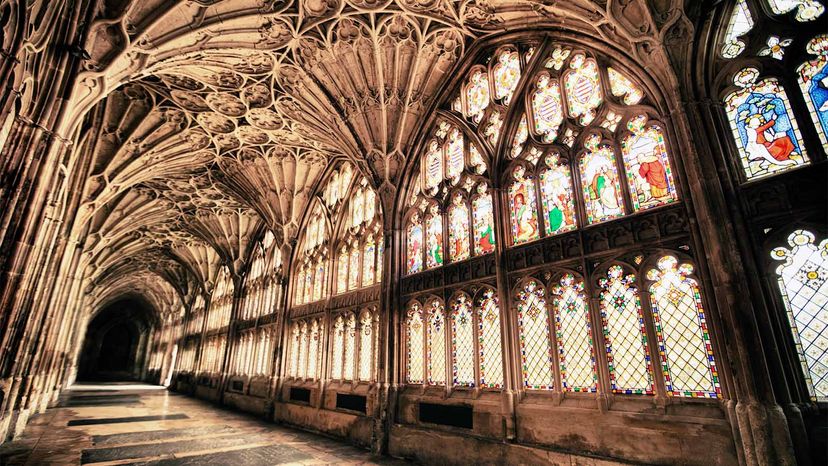
Advertisem*nt
5. Gargoyles and Ornate Decoration Stone
Detailed statues, columns, spires, pinnacles and the trademark gargoyles are emblematic of Gothic style. It may be hard to imagine a time before smartphones and the internet, but centuries ago, these ornate decorations conveyed information and narratives to the people.
"Most of society didn't know how to read and write, so the way that you told a narrative and the story of the Bible was through the stained glass and through the ornaments in the stone," Colberg says. "To be able to have a building that serves as a pedagogical tool is pretty amazing; very few other times in history have made their mark in this important way."
Advertisem*nt

Examples of Gothic Architecture
Travel throughout Europe and you'll cross paths with plenty of Gothic cathedrals and churches. Many of the famous cathedrals are based in France, the birthplace of the style. The Cathedral of Notre-Dame in Reims is located in the French town of the same name, while the Chartres Cathedral located in the Centre-Val-de-Loire region, is one of the most complete works of the early 13th century. Both have UNESCO World Heritage status.
But it's not only in France that many famous and important Gothic style cathedrals still stand. The largest Gothic cathedral in the world — Seville Cathedral — is in Spain. The ornate cathedral took more than a century to build, spanning from 1402 to 1506. However, the Milan Cathedral in Italy, took around 600 years to complete and takes center stage in downtown Milan. Then of course there's Westminster Abbey in London, and Canterbury Cathedral in Canterbury, Kent, perhaps two of the most famous Christian structures in England.
Advertisem*nt
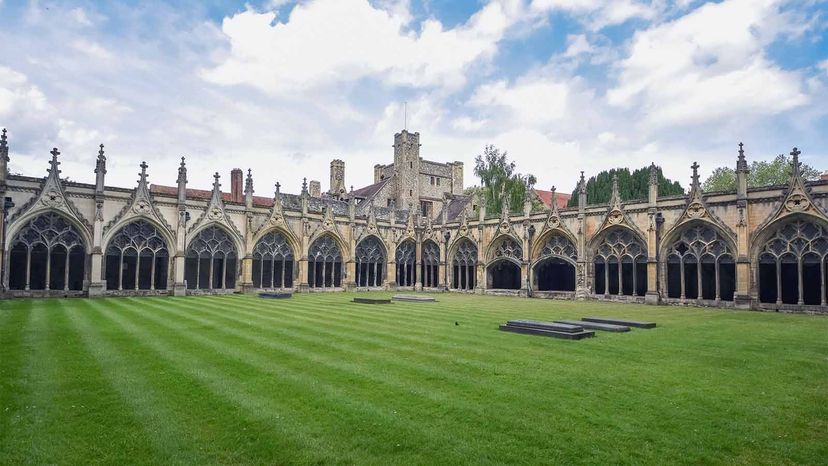
Now That's Interesting
Today the word Gothic or more aptly, Goth, may stir images of people dressed in all black wearing dreary makeup. But Gothic refers to a group of people and their culture after the fall of Rome. "The name Gothic references the Germanic people who lived in Europe from ancient times up to the Middle Ages," says Colberg.
Frequently Answered Questions
What defines Gothic architecture?
A Gothic-style architecture is one with pointed arches, ribbed vaults, and flying buttresses.
Cite This!
Please copy/paste the following text to properly cite this HowStuffWorks.com article:
Citation